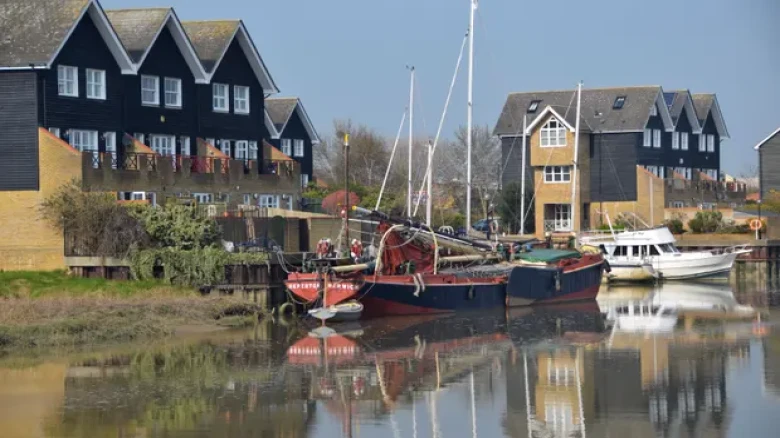Sports

The homes at risk are worth tens of billions of pounds, and sea level rises that would cause flooding are now nearly unavoidable due to the accelerating rate of climate change.
color:black;mso-themecolor:text1">Digital Desk:
mso-fareast-font-family:"Times New Roman";color:black;mso-themecolor:text1"> As
the climate catastrophe takes hold, new evidence predicts that approximately 200,000
coastal buildings in England will be at risk within 30 years.
mso-fareast-font-family:"Times New Roman";color:black;mso-themecolor:text1">These
are the homes that may not be saved since attempting to do so with seawalls and
other coastal defences would be prohibitively expensive. North Somerset,
Sedgemoor, Wyre, and Swale are among the most vulnerable places.
mso-fareast-font-family:"Times New Roman";color:black;mso-themecolor:text1">Sir
James Bevan, the head of the Environment Agency, warned last week that many
homes would be impossible or uneconomic to save, and that entire towns would
have to relocate inland, calling it "the toughest of all uncomfortable
facts."
mso-fareast-font-family:"Times New Roman";color:black;mso-themecolor:text1">The
homes at risk are worth tens of billions of pounds, and sea level rises that
would cause flooding are now nearly unavoidable due to the accelerating rate of
climate change.
mso-fareast-font-family:"Times New Roman";color:black;mso-themecolor:text1">By
2050, sea levels around the English coast are expected to be 35cm higher.
Furthermore, foreshores are eroding, resulting in higher waves, particularly
during storms.
mso-fareast-font-family:"Times New Roman";color:black;mso-themecolor:text1">Researchers
at the University of East Anglia's Tyndall Centre released a study in the
peer-reviewed journal Oceans and Coastal Management that estimated over 200,000
houses and businesses at risk of abandonment.
mso-fareast-font-family:"Times New Roman";color:black;mso-themecolor:text1">"Significant
sea level rise is now unavoidable," said Paul Sayers, the paper's primary
author. Many of our major coastal cities will continue to be protected, but
this may not be possible for certain coastal areas. We need a real national
discussion about the magnitude of the threat to these communities and what
constitutes a fair and long-term response, including how to assist individuals
in relocating."
mso-fareast-font-family:"Times New Roman";color:black;mso-themecolor:text1">"In
the long run, climate change implies that some of our communities - both in our
nation and around the world - will be unable to stay where they are,"
Bevan said at a conference last week. That's because, while we can safely
rebuild after most river flooding, there's no going back for territory that has
been eroded away by coastal erosion or that has been permanently or repeatedly
submerged by rising sea levels."
mso-fareast-font-family:"Times New Roman";color:black;mso-themecolor:text1">"In
some areas, the proper approach - in economic, strategic, and human terms -
will have to be to shift communities away from danger rather than trying to
shield them from the unavoidable effects of increasing sea levels," he
added. Previous estimates of the number of homes at risk were lower, as
government estimates have not kept up with climate science. In 2018, the
Committee on Climate Change warned that about a third of the UK coastline
was in danger.
mso-fareast-font-family:"Times New Roman";color:black;mso-themecolor:text1">Jim
Hall, professor of climate and environmental risks at the University of Oxford,
who was not involved with the latest study, said: “We need to have honest
conversations with coastal communities, that it will simply not be possible to
protect every house and business from sea level rise. These changes are coming
sooner than we might think and we need to plan now for how we can adjust,
including a nationwide strategic approach to deciding how to manage the coast
sustainably in the future.”
color:black;mso-themecolor:text1">
Leave A Comment